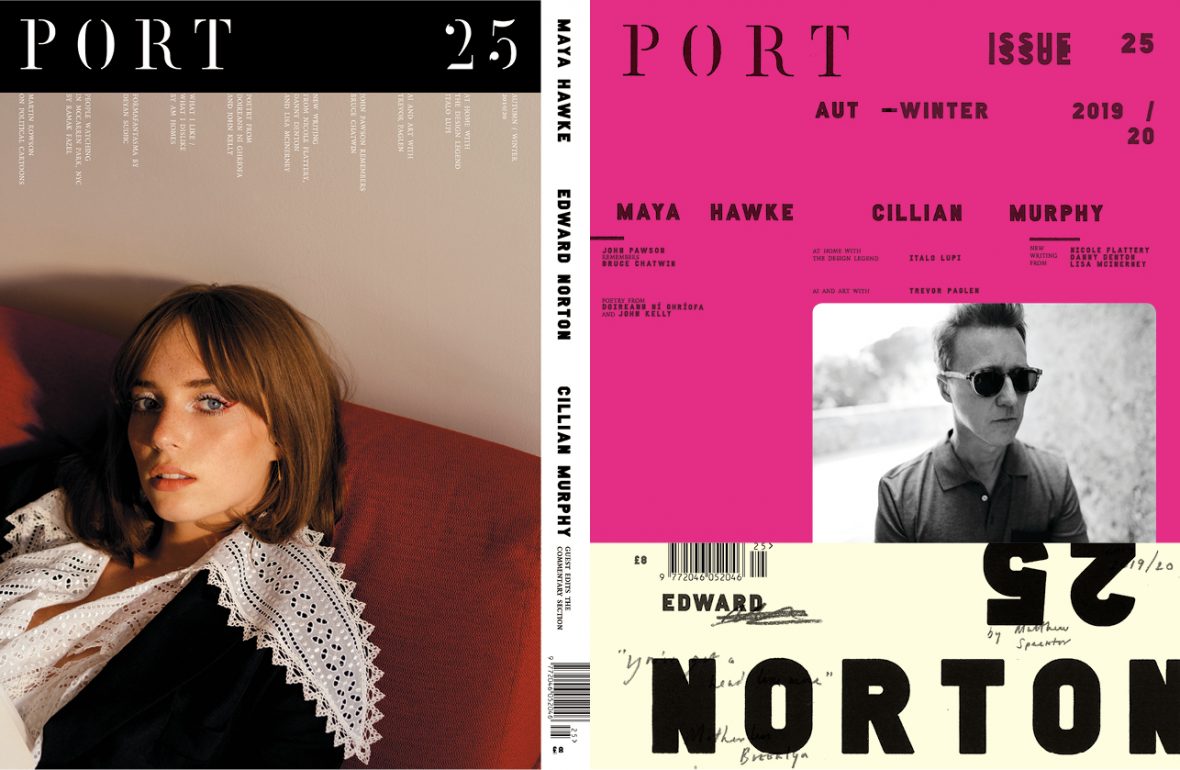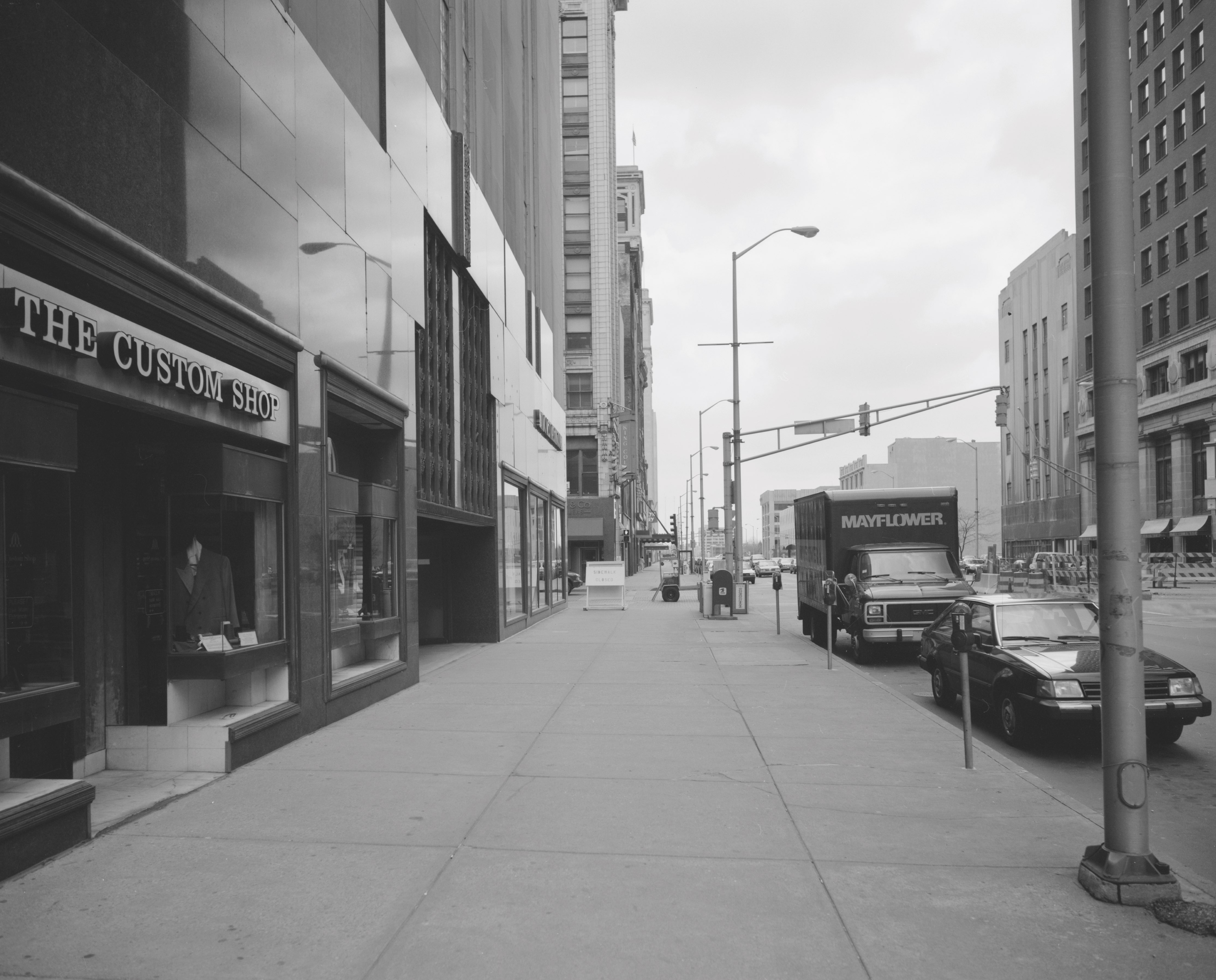George Kafka travels to Le Marche, the ancestral home of Tod’s, to uncover how nearly a century of shoemaking heritage is adapting to a changing global market

Toni Ripani moves cuts of leather between his hands like they are one with his own body. He pokes and pinches at different sections, feeling for depth and texture; he runs his palm across the surface in search of blemishes. His hands appear rough but they are soft when shaken and delicate in their appraisal of the sheets. He is particularly fond of the wrinkled edges of the leather. Like the grain of a plank of wood, these marks speak to the former life of the thing that lies before him: an anatomical object that describes both beast and shoe.
Ripani, 72, is head of the leather department (and something of a celebrity) at Tod’s, the luxury shoe manufacturer based in Le Marche, eastern Italy. In the main foyer of the campus’s central building, a Vanessa Beecroft photograph shows Ripani, uncharacteristically stony faced, amidst a line-up of models draped in raw cuts of his beloved leather. The photo documents a performance by Beecroft in celebration of the craftsmanship of Ripani and his colleagues on the factory floors. “He was very emotional that day,” notes Andrea Della Valle, whose father, Dorino, was head of the company when Toni began working with the family, in 1974.

Della Valle is, today, the vice-chairman of Tod’s; his brother Diego is the chairman and CEO. Amidst the corporate minimalism of their campus, itself in the centre of an anonymous industrial park close to the Adriatic coast, the handprints of a tight family business run deep: The rustic cobbler’s desk where Filippo Della Valle, Diego and Andrea’s grandfather, began the business, in the early 20th century, is displayed on a shiny metallic plinth outside the prototype workshop. The bicycle Dorino used to get around the campus stands in an entrance foyer, untouched since his death in 2012. And the campus itself was designed by Diego Della Valle’s wife, the architect Barbara Pistilli. When it opened in 1998, it was pioneering in providing lifestyle facilities for its employees, with a gym and library, as well as a kindergarten for up to 28 kids.

Even the street on which the campus sits is named after Filippo Della Valle, and on the walls in offices and on the factory floor are portraits of Dorino, complete with cane and throne, at once a supreme leader and a dearly departed patriarch. Unsurprisingly, a number of employees, alongside Ripani, have stuck around for decades, out of loyalty to a dynastic enterprise that echoes the lineage of other Italian business families: the Lavazzas, Bulgaris and Ferragamos.
Even the Medicis may be a fitting comparison, considering the paternalistic and patronal role the Della Valle family plays in both local and national public life – their cultivation of a reputation that exceeds the luxury of their handmade leather shoes. Like the Medicis, the Della Valles are self-professed lovers and patrons of art, and the Tod’s campus is littered with sculptures and trophy objects, both commissioned and bought, in a way that is entertaining and occasionally incongruous, such as the juxtaposition of Anselm Kiefer’s 2005 painting ‘Dein und Mein Alter und das Alter der Welt’ beside the body of an F1 Ferrari. Beyond Le Marche, the Della Valles are familiar to a broader public: Until recently Andrea was the owner of Fiorentina Football Club. Meanwhile Diego has been celebrated in the Italian media for his multi-million-euro role in the restoration of the Colosseum. When a major earthquake struck Le Marche and surrounding regions in 2016, the Della Valles built a new factory at Arquata del Tronto to assist with the region’s economic recovery.

In the workshop for prototypes, a craftsman is filing a foot-shaped block of wood. With his own left foot, he tightens a leather band strapped to a wooden paddle that holds the block in place. Small adjustments narrow the ankle, curve the toe and flatten the bridge. He works with his eyes and his fingers, using no notes or technical drawings. His movements recount more than a decade of experience, a precision that crafts the wooden profiles around which Tod’s samples are moulded. To his right, a wall of wooden moulds – all right feet – document just the last four years of shoemaking at the factory.

Beginning as a lone cobbler at the turn of the 20th century, Filippo Della Valle started to manufacture shoes under the family name in the 1920s. Tod’s the brand was born in the 1970s under the guidance of Dorino and Diego (the Della Valle name was deemed unsuitable for a growing international market). Through the ’80s and ’90s, the company grew, acquiring the brand Fay and launching Hogan to reach a broader, predominantly North American market. Today, with 4,800 employees, over 250 stores worldwide and an annual turnover of nearly €1bn, Tod’s is a modernising heritage brand competing for attention in the rapidly changing luxury world, replete with capsule collections, sideline collaborations, exhibitions and ‘drops’.

Marrying the traditional values of Tod’s and the Della Valles with the Virgil Abloh-influenced evolution of the market is an ongoing challenge for the business. In February this year the company hired Michele Lupi, a former editor of GQ, Rolling Stone and Icon Design in Italy, as ‘men’s collection visionary’. “I had written an editorial asking myself how a big luxury company can take their classic lines and combine them with this new movement – younger people, teenagers who want to have luxury goods from big companies,” explains Lupi. Diego Della Valle read the piece and invited Lupi to meet. “He told me,” continues Lupi: “‘In a year from now, all the companies will take on editors from around the world. Not to do public relations, but content. That’s the big difference, because in the near future big companies like mine will be more like a media company.’”

Thus, at this year’s Salone del Mobile in Milan, Lupi oversaw an installation by architect Andrea Caputo comprised of a series of shelters, each housing video interviews with contemporary figures, such as designers Formafantasma and illustrator Olimpia Zagnoli, discussing contemporary life and work. The installation promoted the newly launched Tod’s No_Code project, which blends handmade craftsmanship and tech aesthetics. With its allusions to changing contemporary lifestyles, streetwear and the influence of digital culture, Tod’s No_Code is an attempt to introduce the more traditional hallmarks of the brand to millennial markets. The hybrid line is selling particularly well in China.

Back on the factory floor, in the central building of the Tod’s campus, a shoe pops out the oven. It’s a slim, slip-on suede piece, designed to sit below the ankle in two shades of blue; lighter in the vamp and tongue, darker in the lining of the collar. The sole, dotted with rubber ‘pebbles’, runs around the bottom of the heel and half way up the counter. This is the driving shoe, or gommino in Italian, Tod’s quiet icon. The driving shoe is a lightweight loafer, designed for comfort and a sturdy grip on the floor of an automobile.

The shoes rose to popularity during the boom of the Italian car industry during the 1960s. Tod’s handmade version was launched in the ’80s, and today the brand is more or less synonymous with the style, like a Clarks desert boot or Converse baseball sneaker. Usually spotted as part of a smart-casual look in the UK, the shoe takes on a more comfortably elegant position in an Italian context. Rolling through the production line on the Le Marche factory floor – from the close stitching of its structure, to the fixing of its form around a plastic mould, the gluing of its sole, and eventual boxing and packaging, all by hand – it’s easy to imagine these shoes on the feet of the someone incredibly chic, probably driving a Ferrari, careering along an open road, perhaps away from the stable family heritage of Le Marche, in the direction of unknowable destinations to come.
Photography Ilyes Griyeb

This article is taken from issue 25. To buy the issue or subscribe, click here
